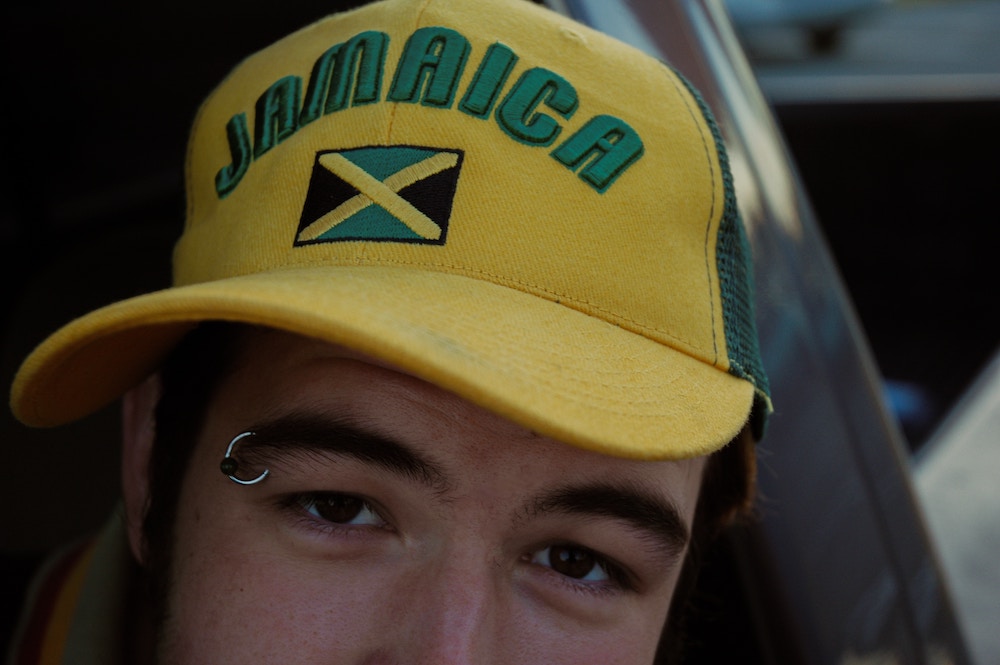Put Down the Safety Pins! Why You Can’t Just Put Anything in Your Piercing July 19, 2021 – Posted in: Informative, Piercing Advice – Tags: proper piercing jewelry, safe body jewelry, which body jewelry to choose, which piercing jewelry to choose
Highlights:
- You must choose jewelry that’s the right size and shape, even after your piercing has fully healed.
- Improperly sized jewelry can lead to rejection, trauma, or piercing bumps.
- When in doubt, visit your piercer for guidance.
As your piercing heals, it can be difficult to practice patience. We all want to try out new jewelry styles ASAP. However, for the safety of your piercing, patience is key.
Once you’ve hit that minimum healing time, you might be tempted to trade out your jewelry for something fresh. But, changing your jewelry too soon or choosing the wrong type of jewelry can prolong healing or cause complications even if your piercing has already fully healed.
Here are some tips and guidelines for choosing proper jewelry after your piercing has healed.

Photo by Ömer Haktan Bulut on Unsplash
Just because the jewelry fits doesn’t mean that it’s suitable for your piercing
This is perhaps one of the biggest misconceptions out there.
The thing about the human body is that it does an amazing job of healing itself. A big part of body piercing is understanding how the body heals itself and learning ways to work with your body’s natural healing process so that your piercing can be healthy. While proper piercing techniques have a huge role to play when it comes to your body’s acceptance of your piercing, the shape and size of the jewelry that you choose to wear are also important.
For example, a common mistake among those who have body piercings is to wear thinner lobe earrings in a piercing like their navel or eyebrow. However, this mistake could lead to jewelry rejection. Because the bar that goes through the piercing is so small, the body registers it as a splinter rather than a piece of jewelry, and it will start to try and push the jewelry out. This can happen even if your navel or eyebrow piercing has been healed for years.
You need to make sure that the jewelry you wear is the proper gauge for your piercing. This usually means that you should choose jewelry that’s the same gauge as the needle with which you were pierced. Have a conversation with your piercer about suitable gauge sizes for your piercing.
Healing piercings are limited to certain jewelry styles
Even if you’re getting a piercing that can sport multiple styles when it’s healed, there are likely only one or two styles suitable for healing.
For example, a healed septum can wear various hoop styles (like seamless rings and elaborate clickers) and circular barbells. When you get your septum pierced, however, your piercer will likely give you the choice between a captive bead ring or a circular barbell. These ring choices can be more easily inserted into the new piercing, they’re not as heavy as more elaborate jewelry, and they provide enough room for swelling.
The good news is that your piercer (if they’re reputable) will already know the proper jewelry styles for your new piercing, and they’ll provide you with safe initial jewelry options. Your job will be to remain patient through the healing period and refrain from changing to other jewelry styles until after the piercing has healed.
Are you currently healing a new piercing? Buy NeilMed piercing aftercare here.

Photo by Rohit Tandon on Unsplash
Healed piercings are also limited to certain jewelry styles
A common error among the pierced community is to wear whatever jewelry style that they want in their healed piercing. The thing is that even piercings that have been healed for years can see complications like piercing bumps if they’re introduced to ill-fitting jewelry.
Firstly, you need to make sure that the jewelry is the right size. For example, if you purchase a seamless ring, and the jewelry starts to pull against the piercing holes, you’re likely to see some trauma.
Secondly, the jewelry has to be the correct shape. This will depend upon the piercing that you get and your anatomy. Some jewelry types may press against the piercing in awkward ways, causing some issues. There are even some piercings that require you to choose what type of jewelry you’ll eventually want to wear in the piercing so that you can be pierced at an angle that will accommodate the jewelry.
When in doubt, seek the advice of a piercer before you try out a jewelry style. It’s frustrating when you’ve spent so much time on healing only to experience complications in your healed piercing because you’ve chosen the wrong style of jewelry.
You need to take care when changing your jewelry
A quick way to irritate your piercing is to mess around with your jewelry.
Changing jewelry isn’t always an intuitive task. If your piercing has a longer piercing tunnel or it’s in a hard-to-reach location, you may find that you have a difficult time changing the jewelry on your own.
If this is the case, it’s a good idea to visit your piercer. They’ll be able to teach you some tricks to changing your jewelry. If your piercing is particularly difficult, they’ll also have the tools and expertise to change it for you.
While many learn how to change their jewelry themselves, some never do, and that’s okay, too. They simply take a trip to the piercer every time they need a jewelry change.
Getting pierced is a responsibility, and part of that responsibility is understanding the types of jewelry that are healthy to wear. While you need to pay extra attention through the healing period, you still need to make sure that you’re making good choices for your piercing once it has healed. Simply educate yourself about the jewelry styles that you’re allowed to wear as well as the proper sizes, and you’re piercing will be just fine.








